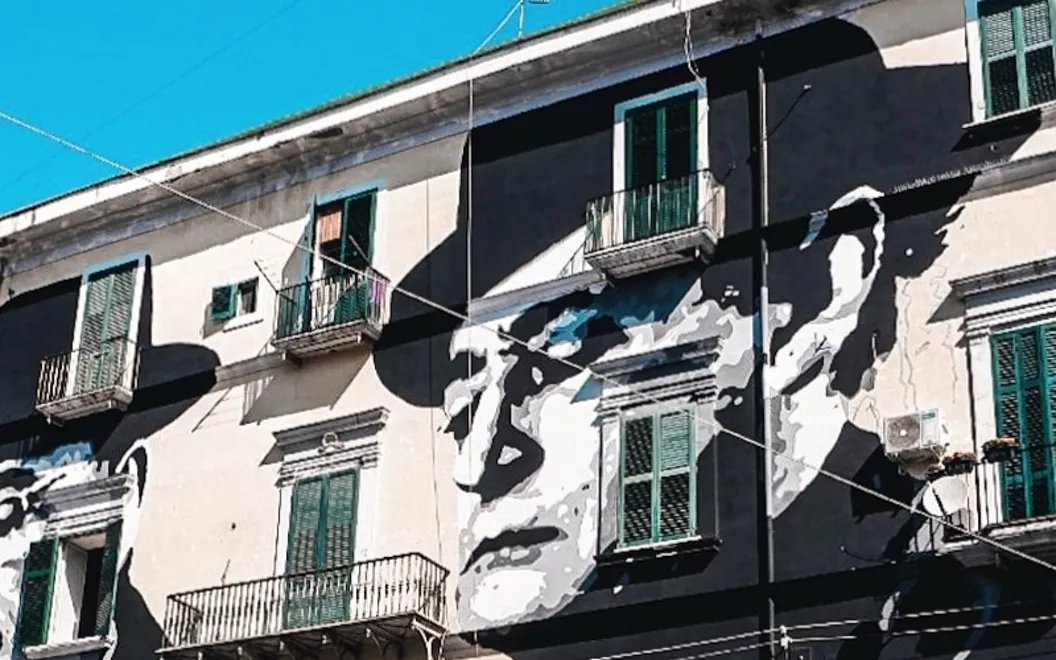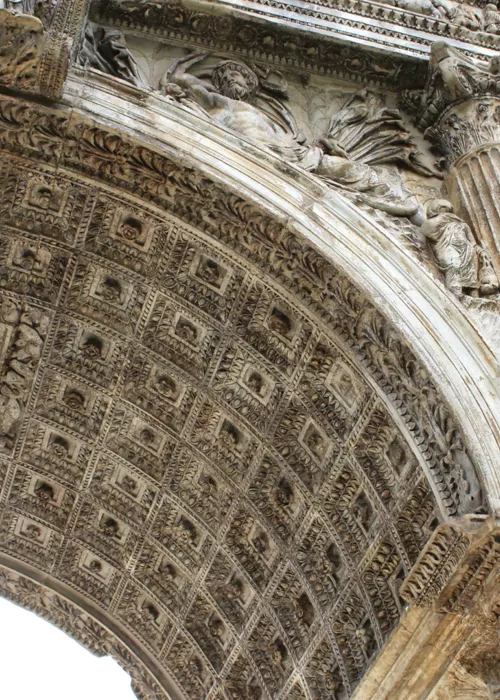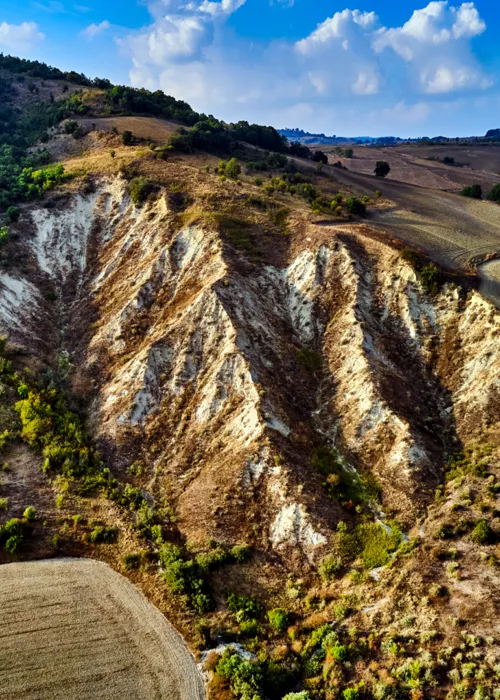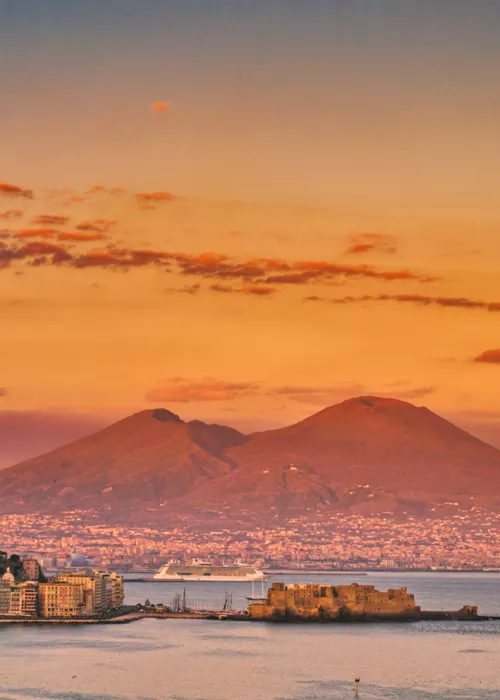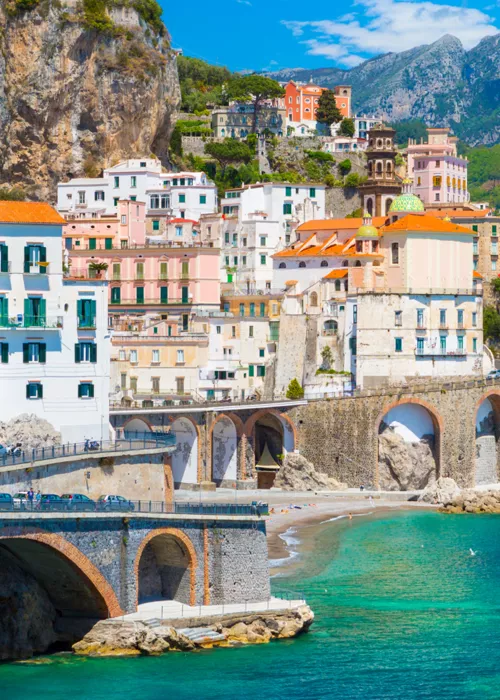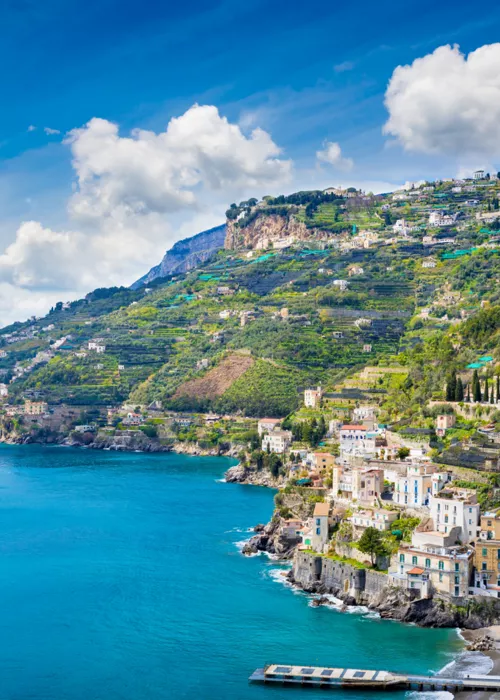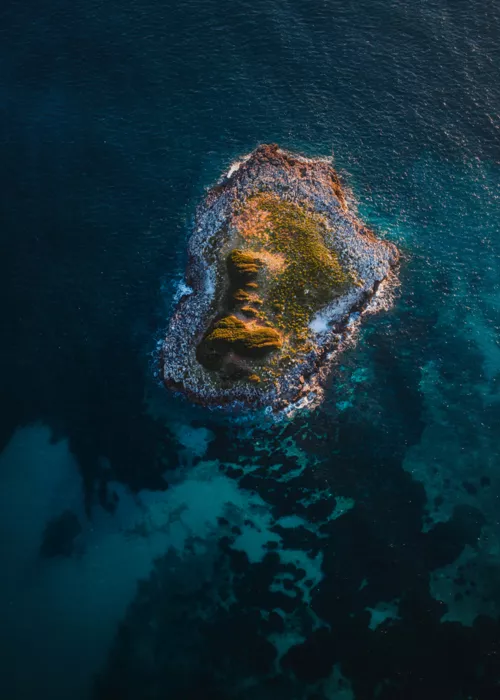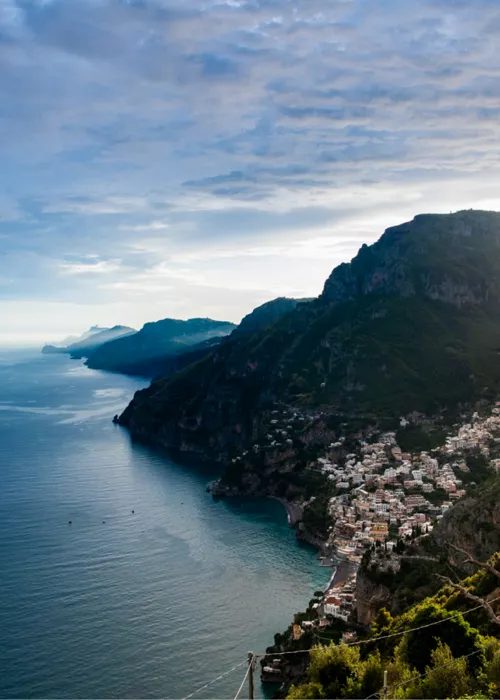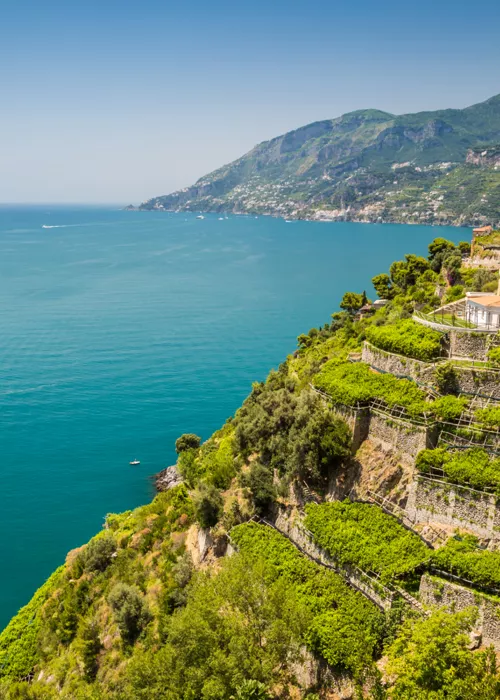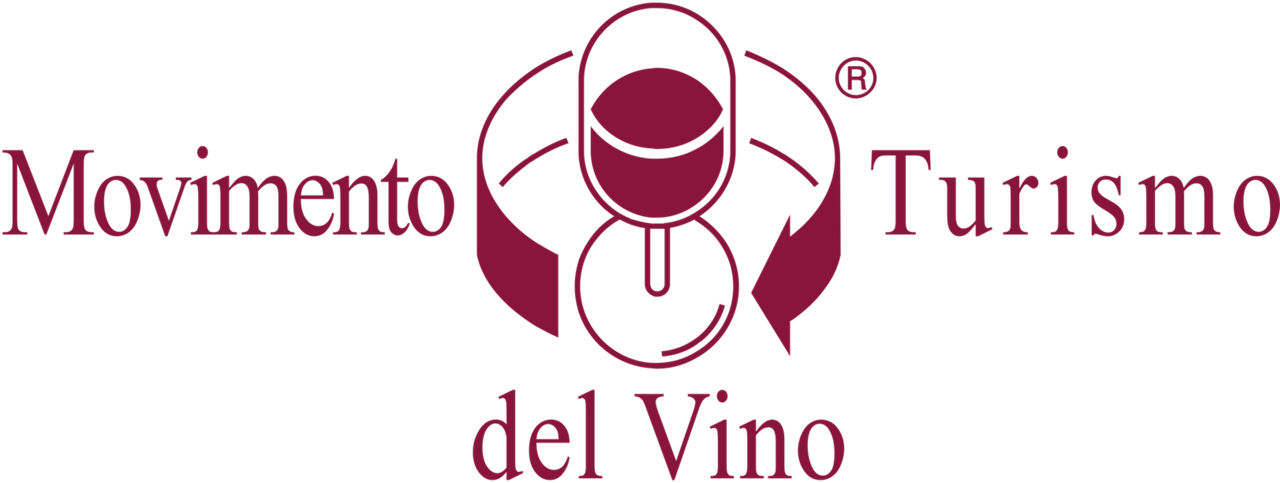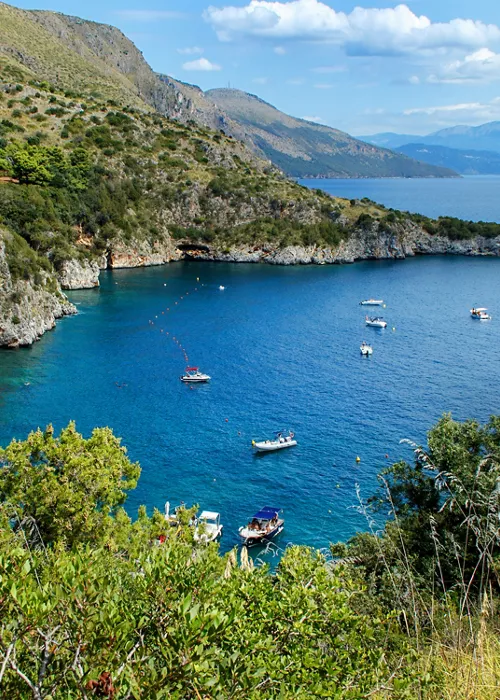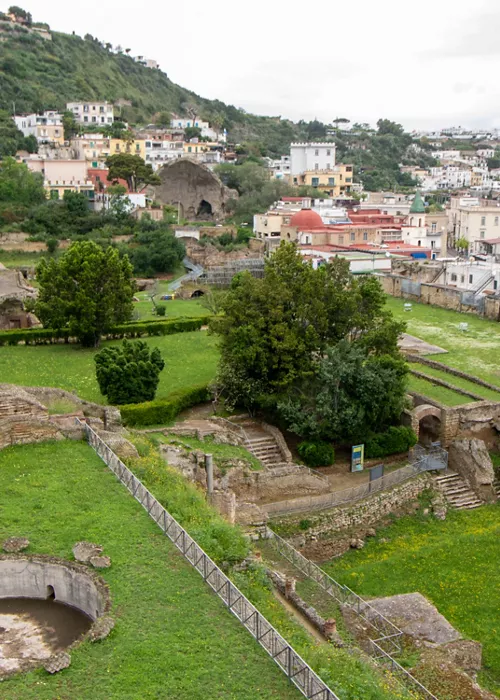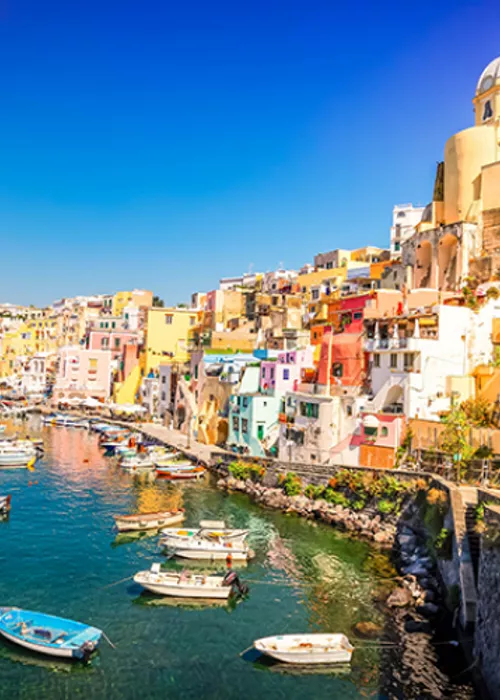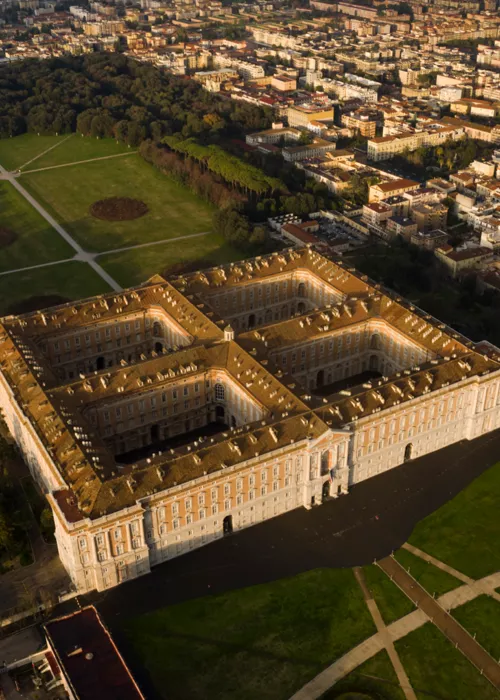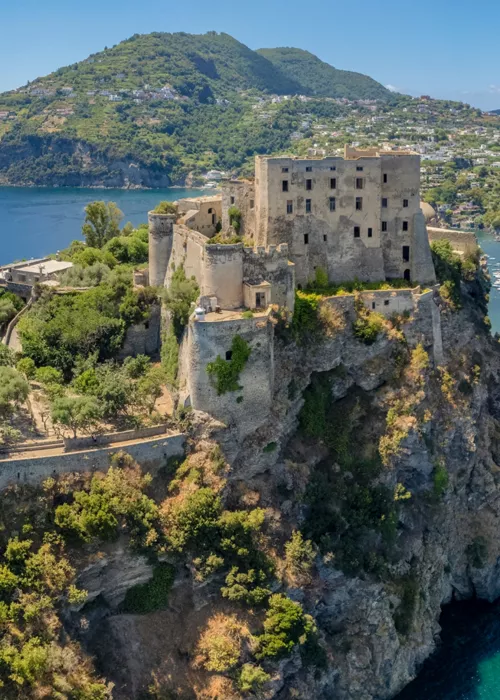Spanish Quarters

Quite simply, the Spanish Quarters are the essence of Naples. Here in these long narrow alleys, you sense the real Neopolitan vibe. Scooters, expertly dodging pedestrians, buzz past the dilapidated buildings and the rows of "bassi", low houses opening directly onto the street. There are lines of laundry stretching from one building to the next, fluttering banners proclaiming aphorisms or dedications of love in Neapolitan dialect.
Wall paintings, stencils and graffiti all add to this blaze of colour. They include works by Roxy in the Box, featuring the pop icons of Frida Kahlo, Rita Levi Montalcini, Amy Winehouse, Andy Warhol, Basquiat and Marina Abramović. And then there are the 250 futuristic works by Cyop&Kaf, who just over ten years ago founded the Quore Spinato project, turning the Spanish Quarters into an open-air museum and returning to the world an image of an energetic, inspiring Naples. But the best-known and most-visited mural in the Spanish Quarters is the one of Maradona, in Via Emanuele De Deo. It was 1990 when Napoli won the Italian championship. Mario Filardi, a twenty-three-year-old artist who grew up in the city, painted the face of the Argentine champion on the front of a building. It took him two nights and three days. Over the years, the mural has been restored and is now a magnet for tourists. Right alongside the "Pibe de Oro", the Argentine Francisco Bosoletti has painted Isis, a replica of the Modesty sculpture by Antonio Corradini kept in the Sansevero Chapel. To see it "in positive", you need to use a camera with a negative filter.
Furthermore, on the same days when Geolier graced the stage of Sanremo 2024, the artist Salvatore Iodice signed a mural dedicated to the Neapolitan rapper in the square now known by everyone as 'Largo Maradona'.
Leaving the maze of the Spanish Quarters, at the Pignasecca Market there is a portrait of Mattia Fagnoni, a seven-year-old boy struck down by Sandhoff's disease, a rare degenerative syndrome. The work was commissioned by the nonprofit Associazione Mattia Fagnoni Onlus, sponsored by the Municipality of Naples and created by David Vecchiato.
Historic centre

From the Spanish Quarters, head to the wonderful monumental complex of Santa Chiara, with the austere Gothic church, the Opera Museum with Roman remains and marble statues, and the 14th-century cloisters restored in the 18th century and richly decorated with majolica and frescoes in the corridors that tell stories from the life of St Francis. Another place to visit, just a little further along, is the Sansevero Chapel, a treasure trove of magnificent sculptures, including the wonderful and impressive Veiled Christ, completed in 1753 by Giuseppe Sanmartino.
Between Spaccanapoli, Via dei Tribunali and the Church of St Gregory the Armenian, you can discover the 40 works in the project L’Arte sa nuotare by Blub, which depicts famous names and celebrities as diverse as Jesus, Totò, the Girl with the Pearl Earring and Amy Winehouse - all painted with subaqua masks as if they were underwater. It is designed as a tribute to people who can keep afloat in a sea of struggle.
In Piazza Gerolomini, on the other hand, you will see the only work in Italy known to have been painted by Banksy: Madonna with gun, protected by plexiglass. The mural shows the Virgin Mary with a gun in place of a halo, as if to represent the strong but contradictory bond between the Camorra and faith. In Vico dei Zuroli is the tattoed face of Sophia Loren, by an unknown artist. After visiting the Cathedral, walk down to Forcella, another historic and vibrant district of Naples. Just outside Forcella, you will be amazed by the giant painting of San Gennaro (St Januarius), by Jorit, a prolific Neapolitan artist. His works (Pier Paolo Pasolini, Ilaria Cucchi and Maradona, among many others) are scattered throughout Naples: at the Arenella, the Centro Direzionale, Scampia, San Giovanni a Teduccio and Rione Don Guanella.
Rione Sanità

Rione Sanità is a neighbourhood whose lively façade and buzzing atmosphere conceals priceless treasures: the catacombs of San Gennaro and San Gaudioso, restored to the light by the La Paranza youth cooperative, the Fontanelle cemetery and the cult of the Souls of Purgatory, sacred places such as the Basilica of St Mary of Healthand St Severus, Palazzo dello Spagnolo and Palazzo Sanfelice.
Until about twenty years ago, the Sanità district was a ghetto, cut off from the rest of Naples by the bridge of the same name, built in the early 1800s by Giuseppe Bonaparte and then Jacchino Murat to facilitate access to the palace of Capodimonte.
In 2004, Father Antonio Loffredo, the priest at the Basilica of St Mary, engaged the local neighbourhood in transforming the area into a centre of cultural and social activity. The initiative attracted the big names of street art, such as Antonio Cotecchia, whose work in Via Mario Pagano is a tribute to Neapolitan life, with the faces of Eduardo De Filippo and Massimo Troisi watching over the local culture, and Alex Senna whose monochrome murals represent scenes from everyday life. Other street artists in action here are Tono Cruz, with Luce in Piazza Sanità - depicting the faces of local children painted in the centre of a spotlight beam, as a beacon of hope and change for the future - and a mural in Vico Arena della Sanità, portraying Totò and Peppino in The Band of Honest Men. The Argentine artist Francisco Bosoletti has turned his hand (and brushes) to the wall of the Basilica of St Mary, where there is a distinctive work named ResisTiAmo, a play on words that tells a story of love and resilience involving two young locals. While the Filipino artist Jerico Cabrera painted the lift on the Sanità bridge with the mural Teneme ca te Tengo, which represents two young people in a tight embrace.
Finally, on the wall next to the façade of the Basilica of St Severus, there is the colourful Totem della Perseveranza by Matu, an anthem to music painted in shapes and colours designed to represent a symphony, and a tribute to the perseverance of the young people of the neighbourhood. This is the home of the youth orchestra Sanitansamble, an educational and musical project that offers children a future away from the streets.


